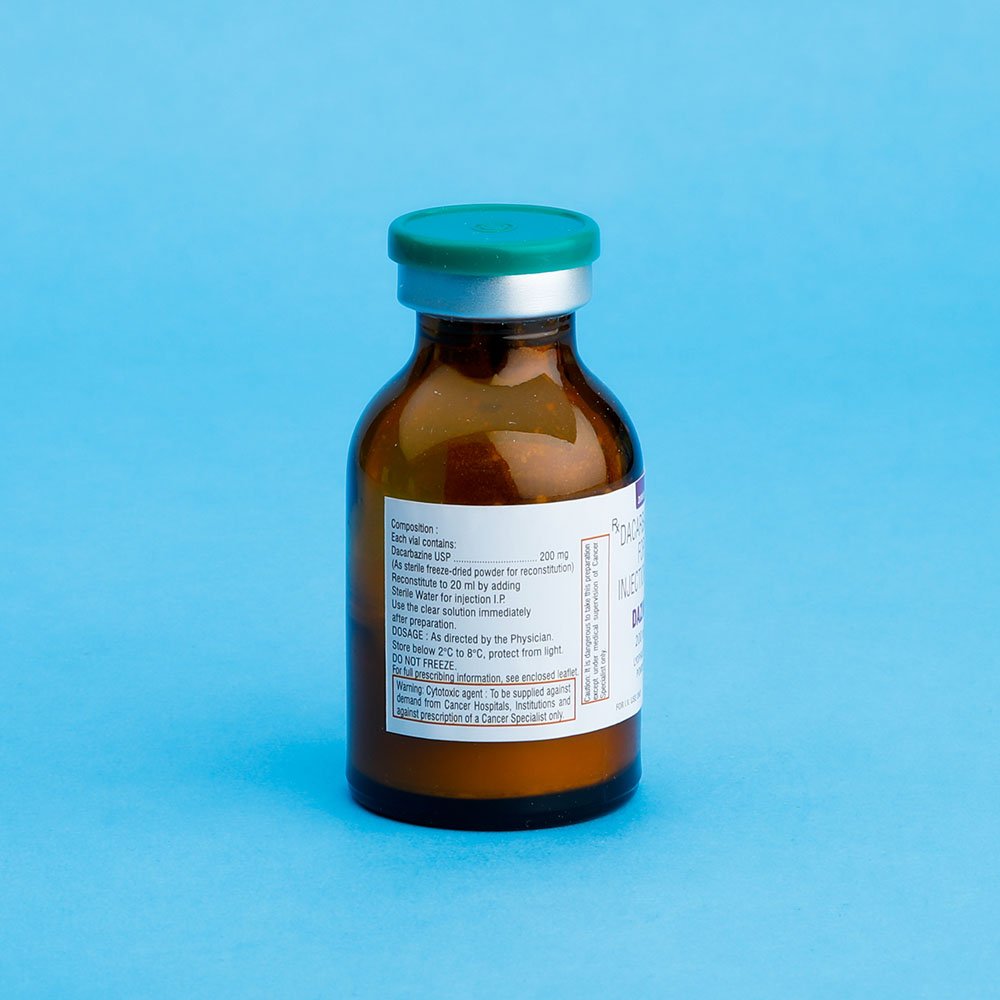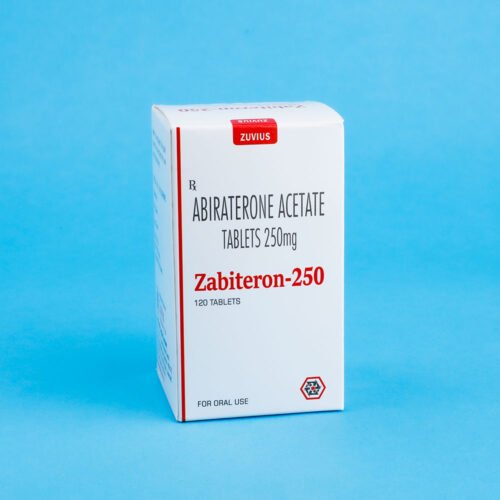Dazine
Dacarbazine
Strength: 200mg / 500mg
Pack Size: 1 vial
Drug Class: antineoplastic agent
Dosage and Administration:
Malignant Melanoma. The recommended dosage of Dazine is 2 to 4.5mg/kg/day for 10 days. Treatment may be repeated at 4-week intervals. An alternate recommended dosage is 250mg/square meter body surface/day I.V. for 5 days. Treatment may be repeated every 3 weeks.
Hodgkin’ Disease : The recommended dosage of Dazine in the treatment of Hodgkin’ disease is 150mg/square meter body surface/day for 5 days, in combination with other effective drugs. Treatment may be repeated every 4 weeks. An alternative recommended dosage is 375mg/square meter body surface on day 1, in combination with other effective drugs, to be repeated every 15 days.
Other : Combination with other antineoplastic agents. Dosage of Dazine must be based on the clinical hematologic response and tolerance of the patient in order to obtain optimal therapeutic results.
Dacarbazine 100mg/vial, 200mg/vial and 500mg/vial are reconstituted with 9.9ml, 19.7ml and 50 ml respectively of Sterile Water for injection. The resulting solution contains 10mg/ml of dacarbazine having a pH of 3.0 to 4.0. The calculated dose of the resulting solution is drawn into a syringe and administered only intravenously.
The reconstituted solution may be further diluted with 5% dextrose injection, or sodium chloride injection and administered as an intravenous infusion.
After reconstitution and prior to use, the solution in the vial may be stored at 40C for up to 72 hours or at normal room conditions (temperature and light) for up to 8 hours. If the reconstituted solution is further diluted in 5% dextrose, injection or sodium chloride injection the resulting solution may be stored 40C for up to 24 hours or at normal room conditions for up to 8 hours.
Cold Storage: yes
Dacarbazine is an anticancer agent. Although the exact mechanism of action of dacarbazine is not known, three hypotheses put forth are 1) inhibition of DNA synthesis by acting as a purine analog,2) action as an alkylating agent and 3) interaction with SH groups.
Dazine is indicated in the treatment of metastatic malignant melanoma, Hodgkin’ disease as a secondary-line therapy when used in combination with other effective agents, neurobiastoma, soft-tissue sarcoma including leiamyosarooma
After intravenous administration of DTlC-Dome, the volume of distribution exceeds total body water content suggesting localization in some body tissue, probably the liver. Its disappearance from the plasma is biphasic with initial half-life of 19 minutes and a terminal half-life of 5 hours.1 In a patient with renal and hepatic dysfunctions, the half-lives were lengthened to 55 minutes and 7.2 hours.1 The average cumulative excretion of unchanged DTlC in the urine is 40% of the injected dose in 6 hours.1 DTlC is subject to renal tubular secretion rather than glomerular filtration. At therapeutic concentrations DTIC is not appreciably bound to human plasma protein.
In man, DTlC is extensively degraded. Besides unchanged DTlC, 5-aminoimidazole -4 carboxamide (AlC) is a major metabolite of DTlC excreted in the urine. AlC is not derived endogenously but from the injected DTlC, because the administration of radioactive DTlC labeled with 14C in the imidazole portion of the molecule (DTlC-2-14C) gives rise to AIC-2-14C1.
Hepatic toxicity accompanied by hepatic vein thrombosis and hepatocellular necrosis resulting in death, has been observed mostly when dacarbazine has been administered concomitantly with other anti-neuplastic drugs, however, it has also been reported in some patients treated with DTIC-Dome alone.
Anaphylaxis can occur following the administration of dacarbazine.
tell your doctor if you are breast-feeding. plan to avoid unnecessary or prolonged exposure to sunlight and to wear protective clothing, sunglasses, and sunscreen. Dacarbazine may make your skin sensitive to sunlight.















